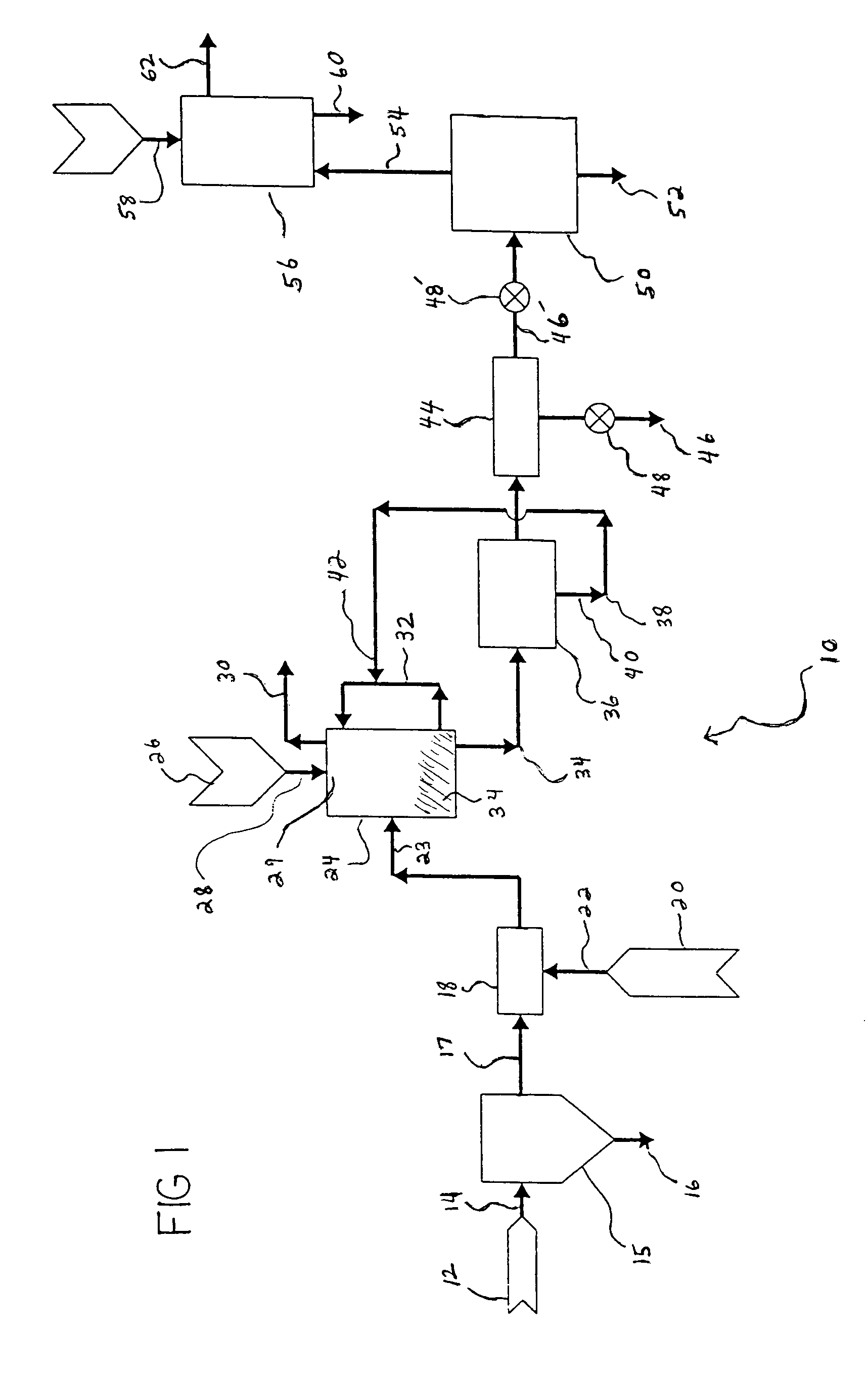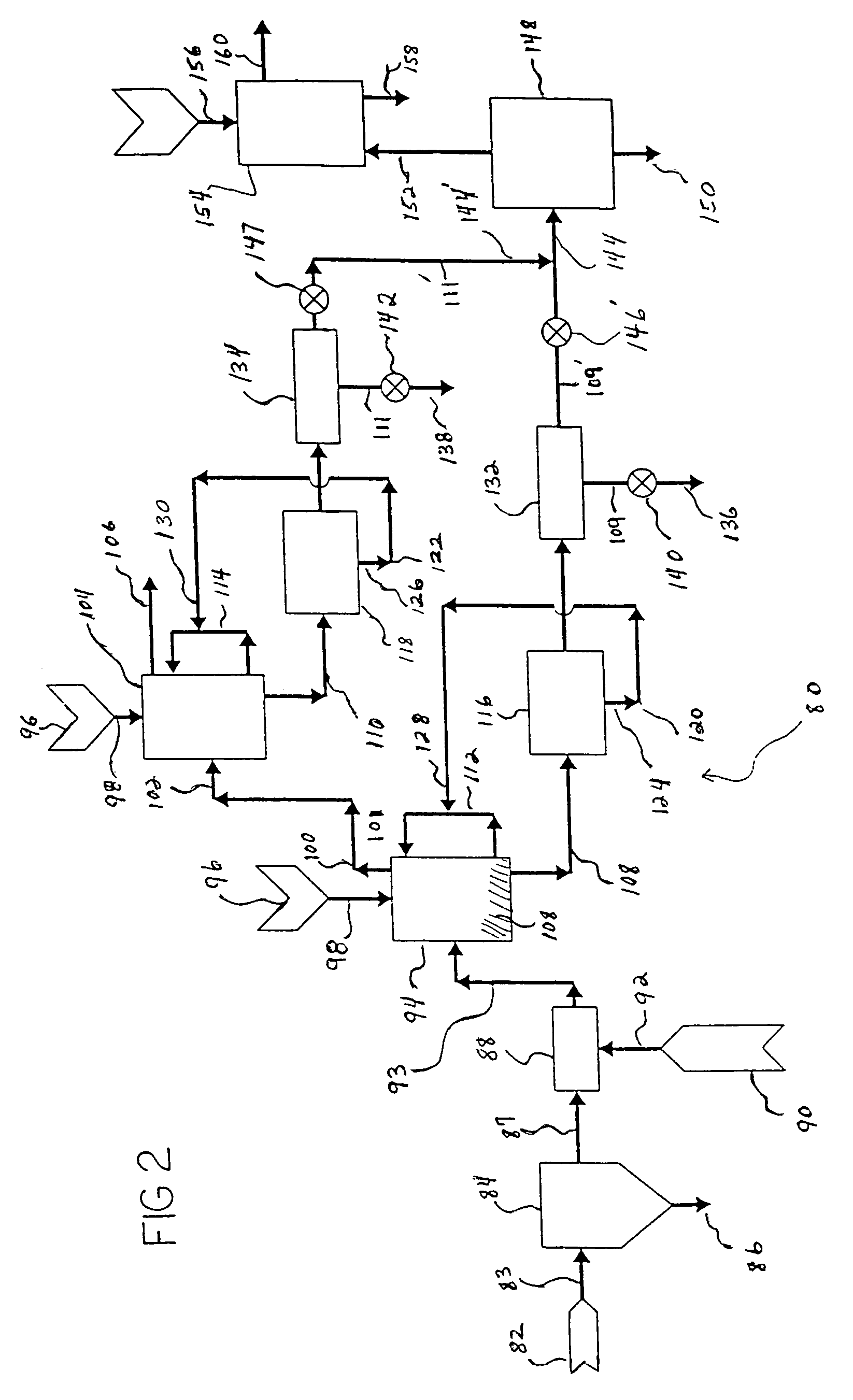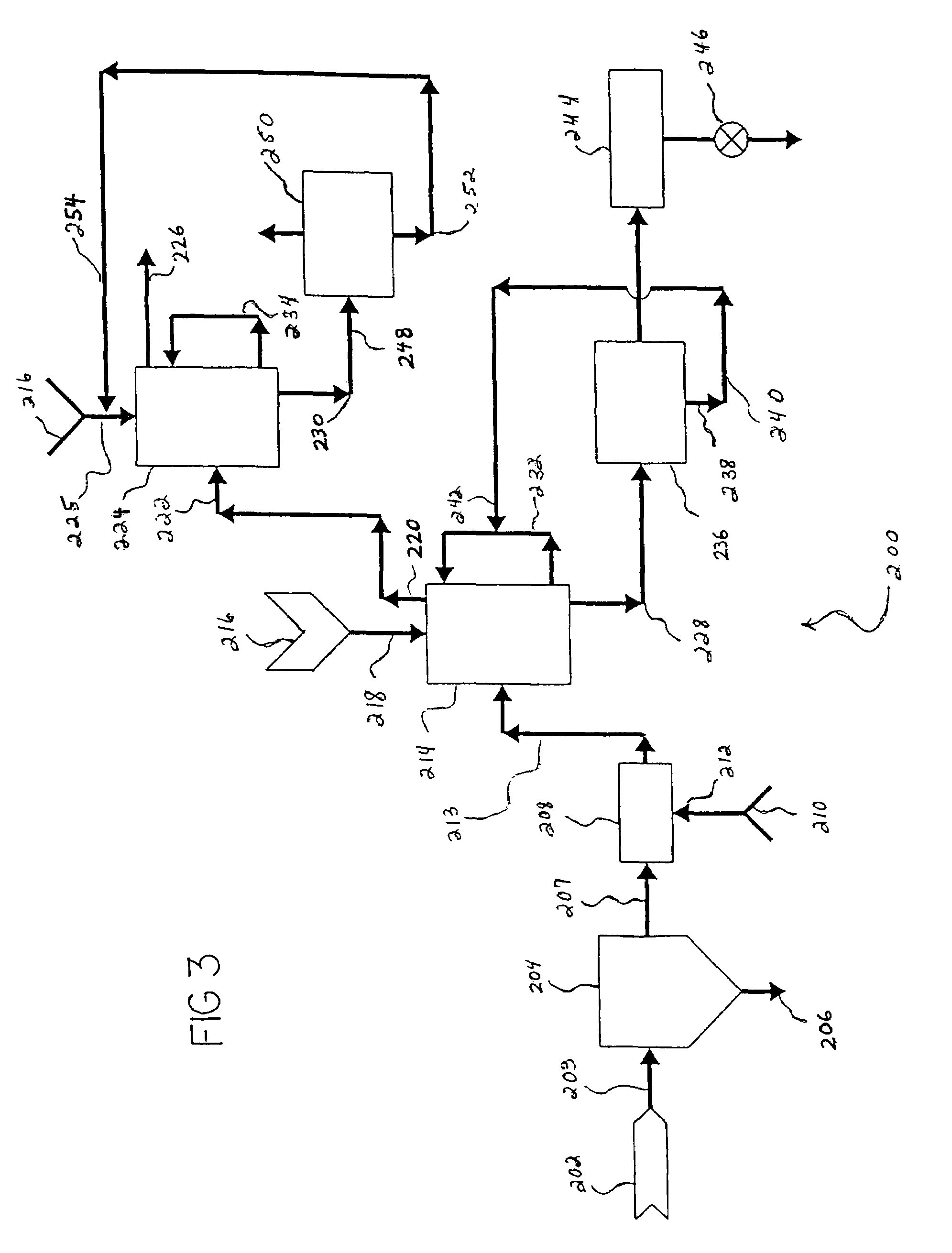Multi-component removal in flue gas by aqua ammonia
a flue gas and multi-component technology, applied in the direction of hydrogen sulfide, sulfur compounds, separation processes, etc., can solve the problems of acid-rain-related air pollution, high cost, and high cost of the method to prevent acid anhydride gases from entering the atmosphere, so as to reduce the cost of the regeneration process, reduce the and reduce the effect of solvent makeup or replacement ra
- Summary
- Abstract
- Description
- Claims
- Application Information
AI Technical Summary
Benefits of technology
Problems solved by technology
Method used
Image
Examples
Embodiment Construction
[0047]The invention provides a wet, regenerable scrubbing process using ammonium hydroxide (NH4OH) solution to remove acid anhydride moiety gases, and trace amounts of hydrogen chloride gas (HCl) and hydrogen fluoride (HF) gas in a gas-liquid contacting reactor. In particular, the invention uses “aqua ammonia” or an aqueous ammonia scrubbing liquor such as [NH3 (aq) / ammonium hydroxide (NH4OH)] to extract certain effluent compounds via acid-base or neutralization reactions.
[0048]Generally, an effluent gas is subjected to chemical scrubbing with aqueous ammonia or some other ammonia-containing compound in a gas-liquid contactor reactor or a scrubber to remove gaseous acid anhydride moieties. The chemical scrubbing produces ammonium salts of the conjugate bases of the acid anhydride moieties. Thermal regeneration of the ammonia scrubbing liquor occurs in an adjacent vessel or remotely.
[0049]The more typical gaseous acid anhydride moieties suitable for extraction and conversion include,...
PUM
| Property | Measurement | Unit |
|---|---|---|
| Temperature | aaaaa | aaaaa |
| Temperature | aaaaa | aaaaa |
| Temperature | aaaaa | aaaaa |
Abstract
Description
Claims
Application Information
 Login to View More
Login to View More - R&D
- Intellectual Property
- Life Sciences
- Materials
- Tech Scout
- Unparalleled Data Quality
- Higher Quality Content
- 60% Fewer Hallucinations
Browse by: Latest US Patents, China's latest patents, Technical Efficacy Thesaurus, Application Domain, Technology Topic, Popular Technical Reports.
© 2025 PatSnap. All rights reserved.Legal|Privacy policy|Modern Slavery Act Transparency Statement|Sitemap|About US| Contact US: help@patsnap.com



